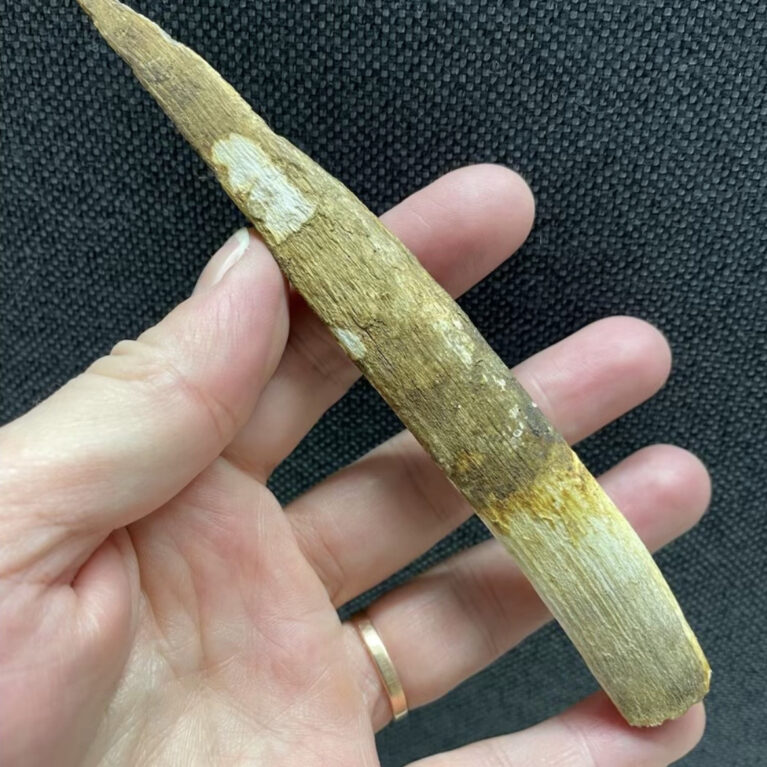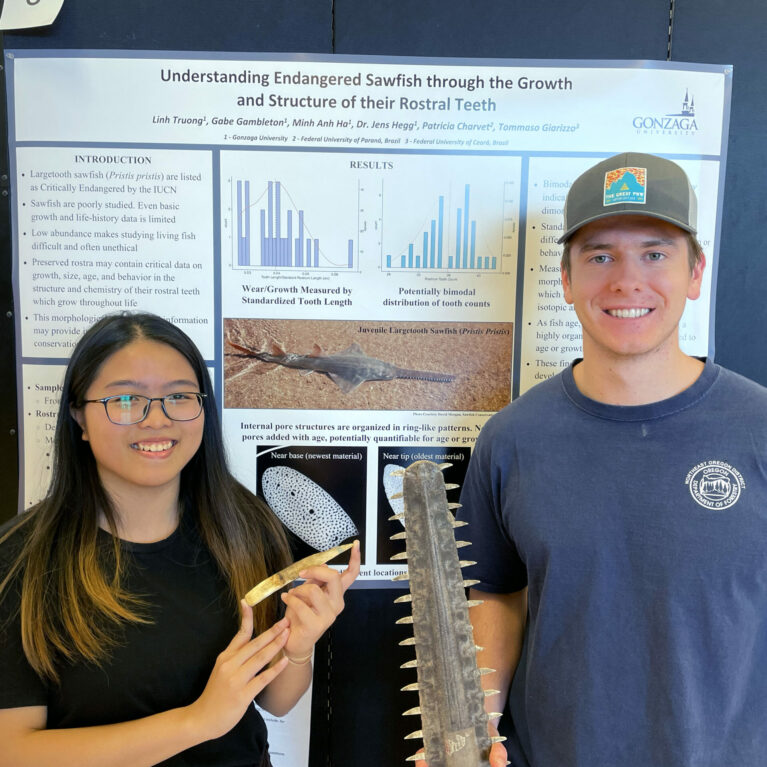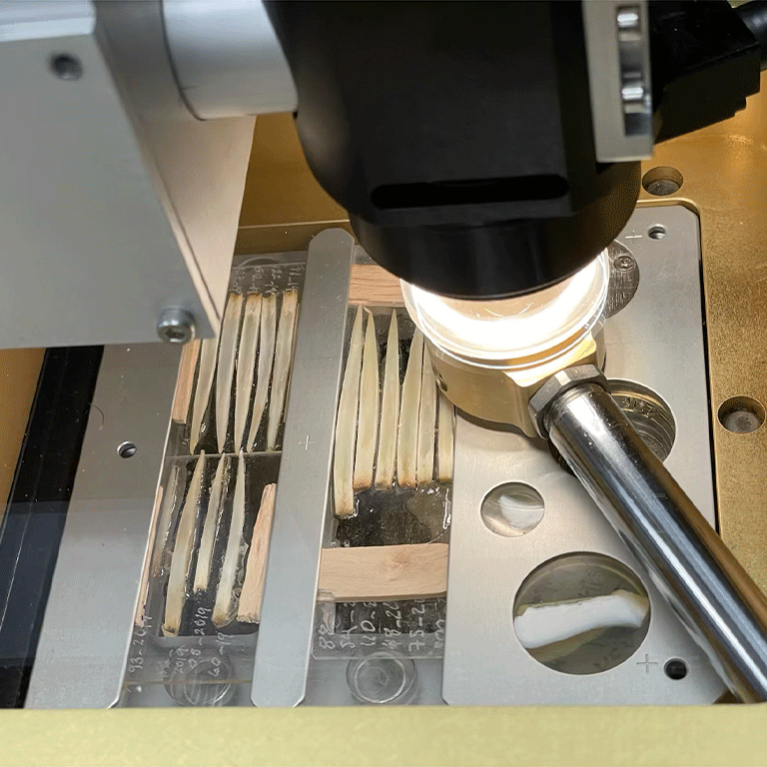Tracking time through teeth
Jens is unlocking information about how and where largetooth sawfish spend their lives through the chemistry of their teeth. The long, toothed rostrum for which sawfish are named might hold some answers about where a sawfish grew up, where it moved, how fast it grew during each period of life, and how its place in the food web changed as it grew. That’s because rostral teeth lay down chemical traces throughout a sawfish’s life. The low numbers of living sawfish mean that Jens is looking at ways to use historical specimens in museums to develop insight into the fine details of the lives of sawfish.
I am an aquatic ecologist interested in the importance of fish migrations to aquatic ecosystems and conservation. I grew up in the Palouse region in north-western USA, in a small, rural farming town nearly 300 miles (480 kilometres) from the coast. Despite this distance, my region is deeply tied to fish migration and the ocean. Salmon migrations in the nearby rivers stretch 500 miles (805 kilometres) into the Rocky Mountains and have been an important piece of the cultures of our region for millennia. Perhaps this helped influence my choice to return to the Palouse region to pursue...



Understanding largetooth sawfish movement, migration, and ontogeny using chemical records stored in rostral teeth
The objective of this study is to use the chemical records stored in archived rostral teeth to uncover important details of how sawfish spend their lives. Our aim is to show that rostral teeth store the movements sawfish make and changes in their place on the food chain over their lifetime.
The results of this study are important because we know very little about sawfish behaviour and ecology. There are so few living sawfish that learning this information by tracking and studying living sawfish is difficult, and knowing what sawfish did in the past is useful for conserving them now. If we can recover this information from rostral teeth in museums, we can unlock a trove of details that would otherwise be impossible to discover.
Sawfish populations declined worldwide well before scientists realised how threatened they were and before their ecology had been studied in detail. Because there are so few living sawfish, some scientists say it is unlikely we can learn a great deal more about their life history from living fish. But this missing ecological information is also key to conserving sawfish species, so we need creative minds and new tools to find ways to uncover it. To do this, some scientists are mapping genetic diversity and population structure using the genetics of rostra found in museums. Tools to uncover life history and migration – among the least understood areas of sawfish ecology – from archived rostra would also be useful. Our research team have indicated that this might be possible. In a small sample we showed that the rostral teeth of largetooth sawfish preserve the chemical record of the sawfish’s movements and life history in the same way that the hard parts of some other fish species do. These chemical techniques have revolutionised how we study migration and movement in other kinds of fish, and we hope that this discovery can help us learn more about sawfish too.
If this technique works on a larger sample of rostral teeth, the results could be important for sawfish conservation. What we could learn from rostral tooth chemistry can’t be gleaned by other methods. Our work has already shown that rostral teeth store movement from fresh to salt water and it suggests that rostral teeth may store even more details about location and habitat. The physical structures inside rostral teeth might also give us clues to how fast the sawfish grow and how old they are. All of this could be an important source of information that helps to conserve the sawfish we still have.
The aim of this study is to uncover important information about the movement and ecology of largetooth sawfish in Brazil using the chemistry stored in 131 archived rostral teeth we have collected. By achieving the following objectives we hope to reconstruct where a sawfish grew up, where it moved, how fast it grew during each period of life and how its place in the food web changed as it grew. These details are currently not very well understood, so the results of this study could help us understand where and how to best protect sawfish.
- To use the samples to show conclusively that these chemical methods work in largetooth sawfish rostral teeth. To do this we will analyse each tooth using a mass-spectrometer to measure the isotopic patterns of strontium, barium, magnesium and manganese in each tooth. We’ll compare this with the chemistry of known locations and predictions from GIS maps of the region. If they match, this will show that the technique works, while also revealing the details of movement throughout each fish’s life.
- To find out if internal structures we have seen in rostral teeth could be used to estimate how old a fish is or how fast it grew. To do this we will us micro-CT imaging, an X-ray technique that creates a 3D model of extremely small objects. The 3D data will help us determine if these structures represent age or growth and will help us build a method to count them reliably.
- To sample the carbon and nitrogen stable isotope patterns in each tooth to show whether sawfish move up the food chain as they mature and possibly to tease out clues about what habitats they might be living in.

